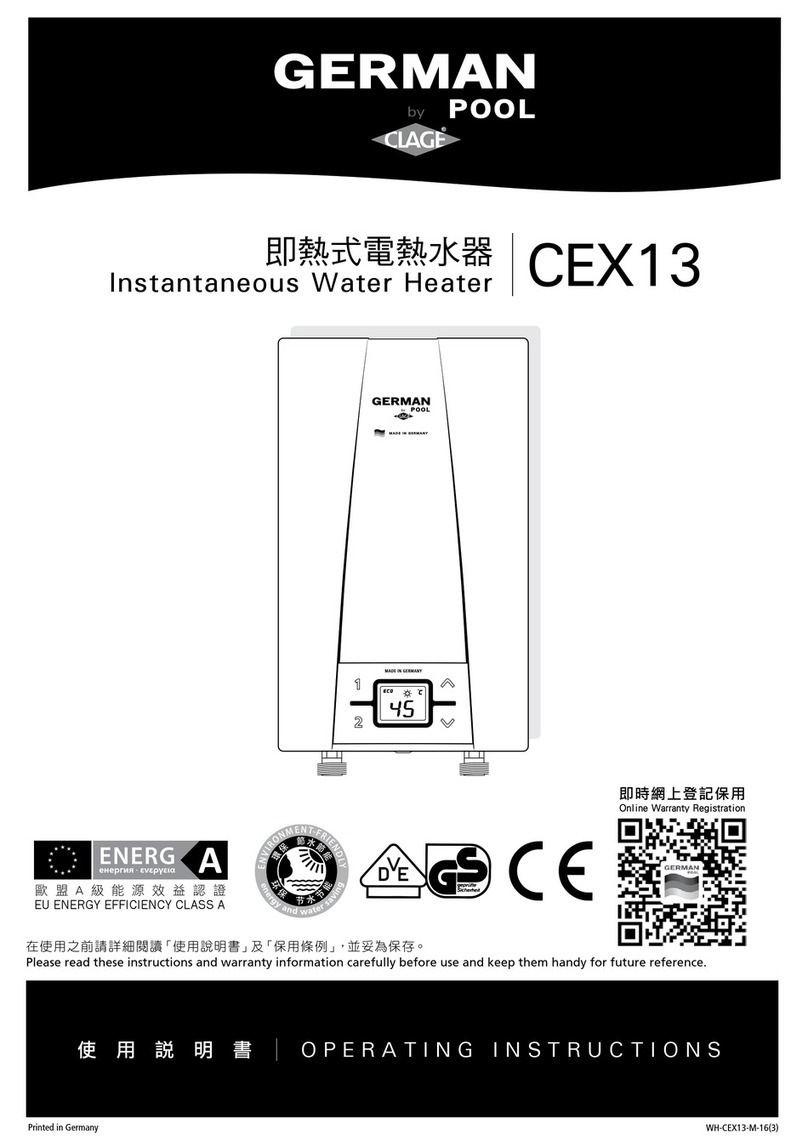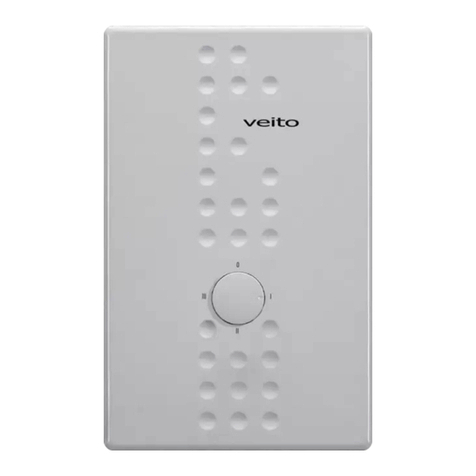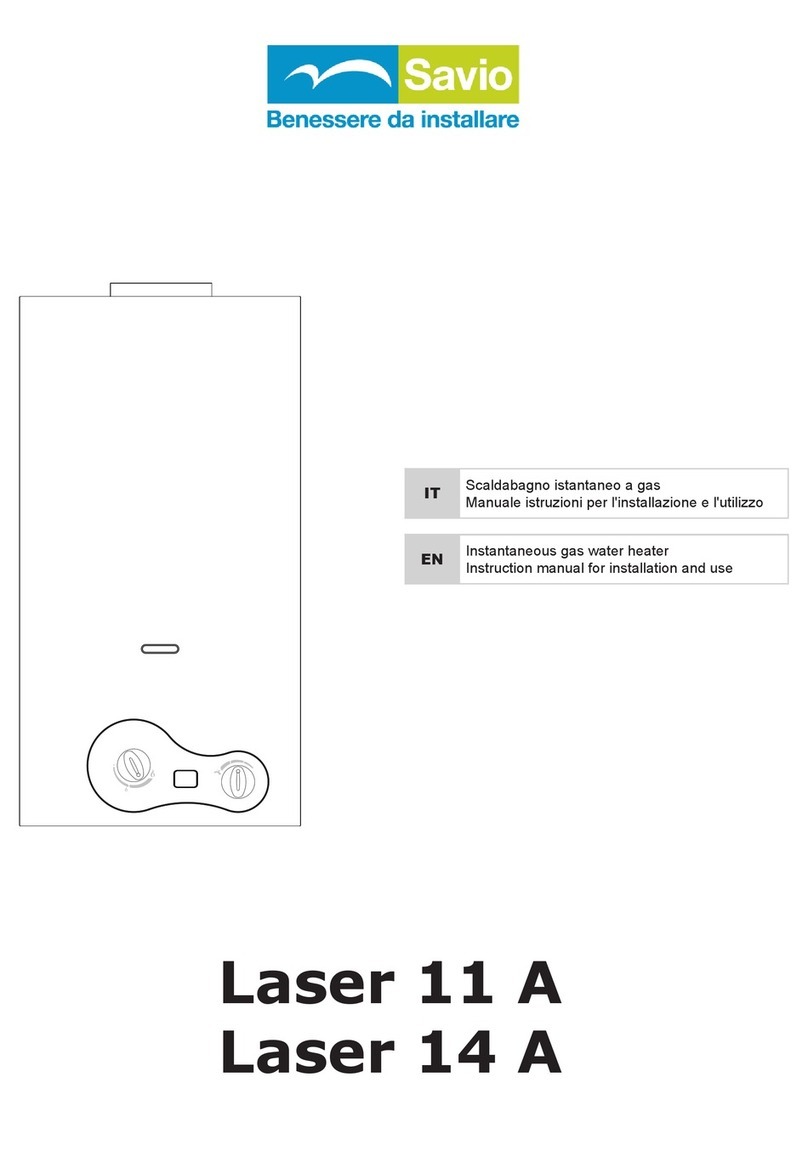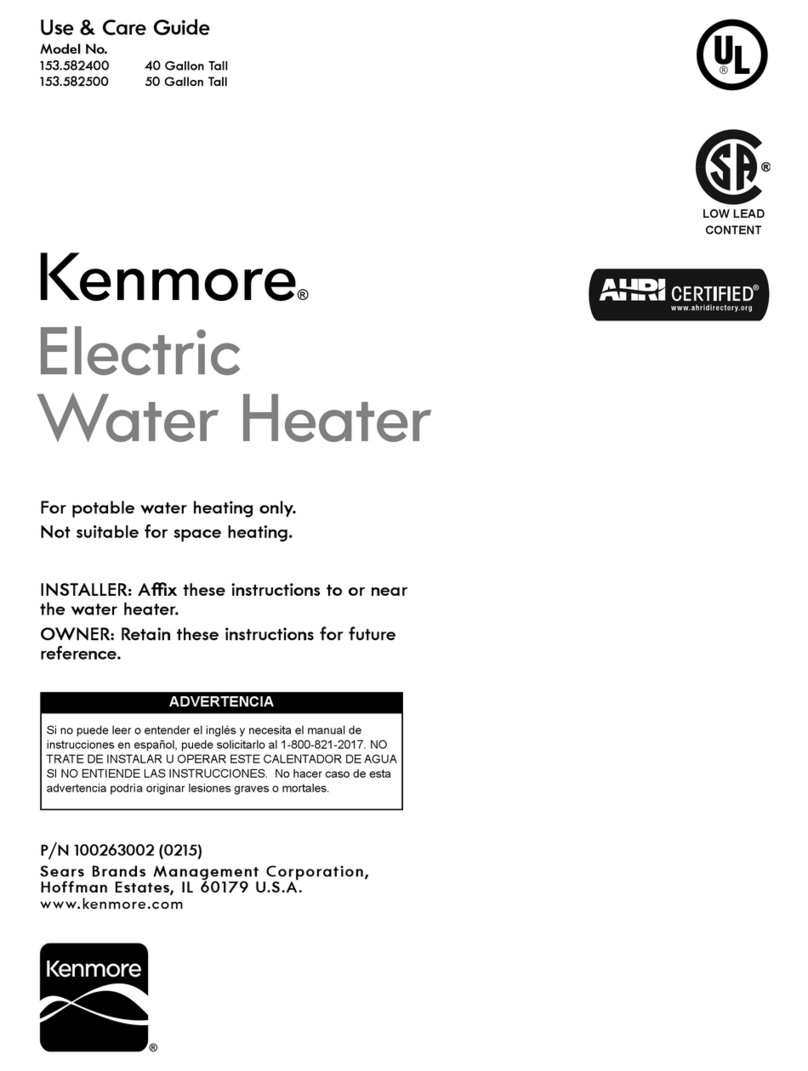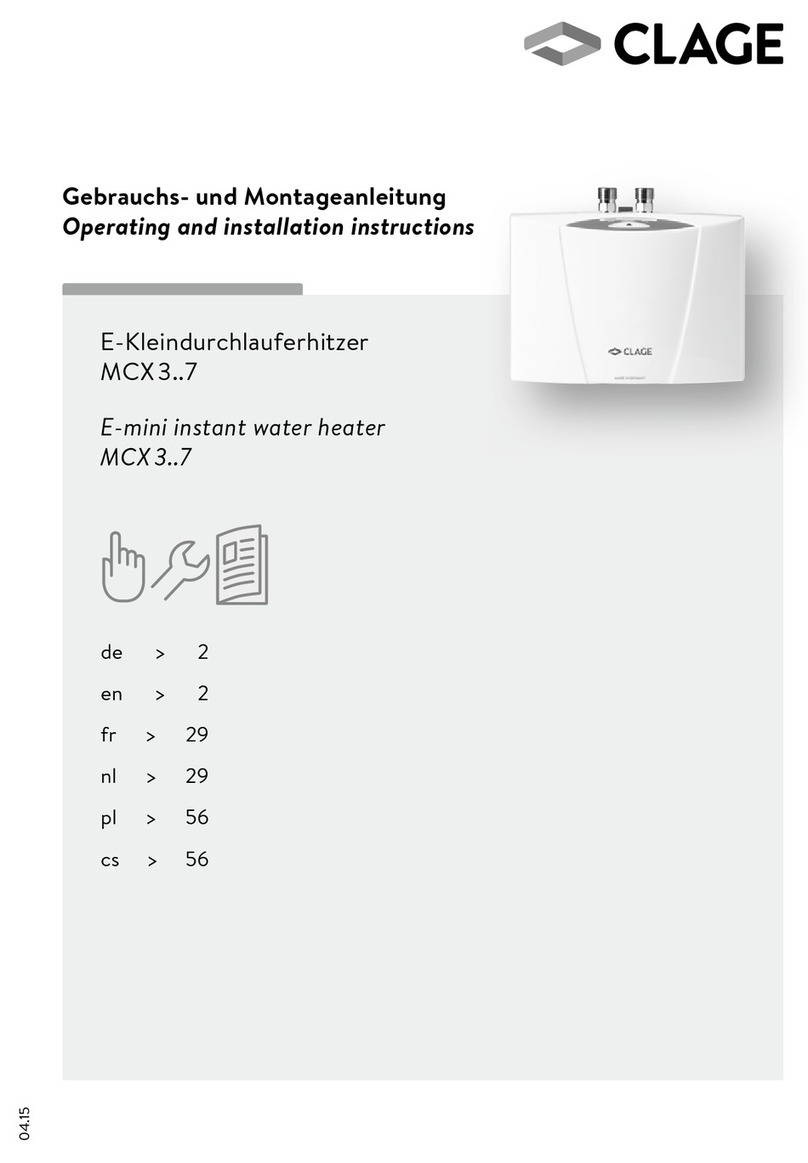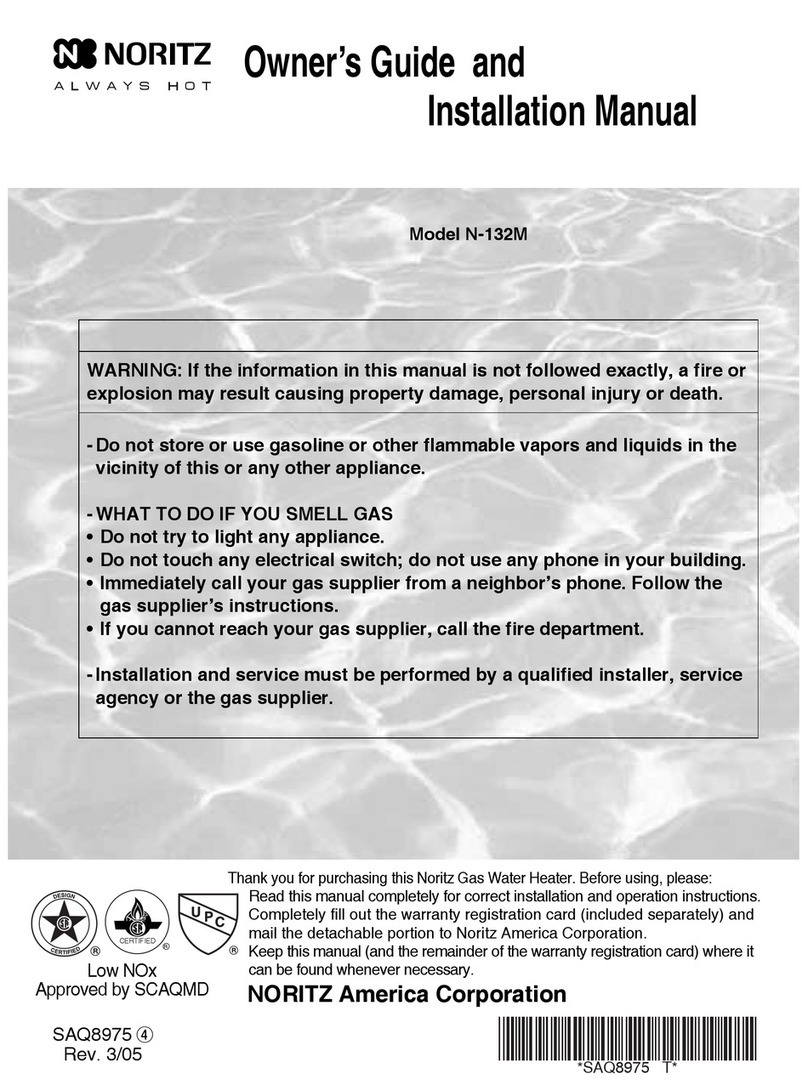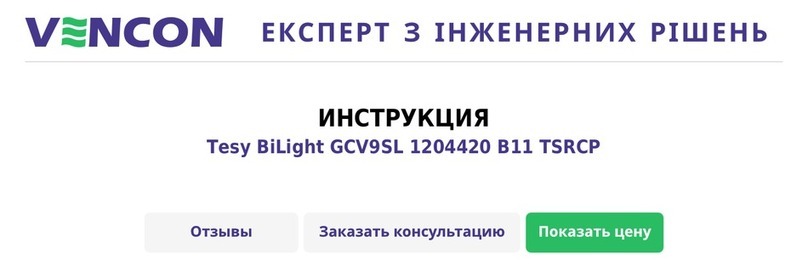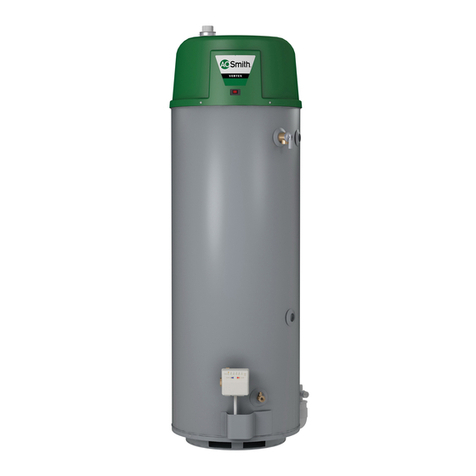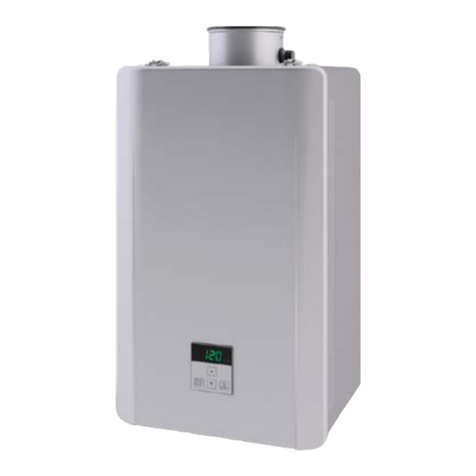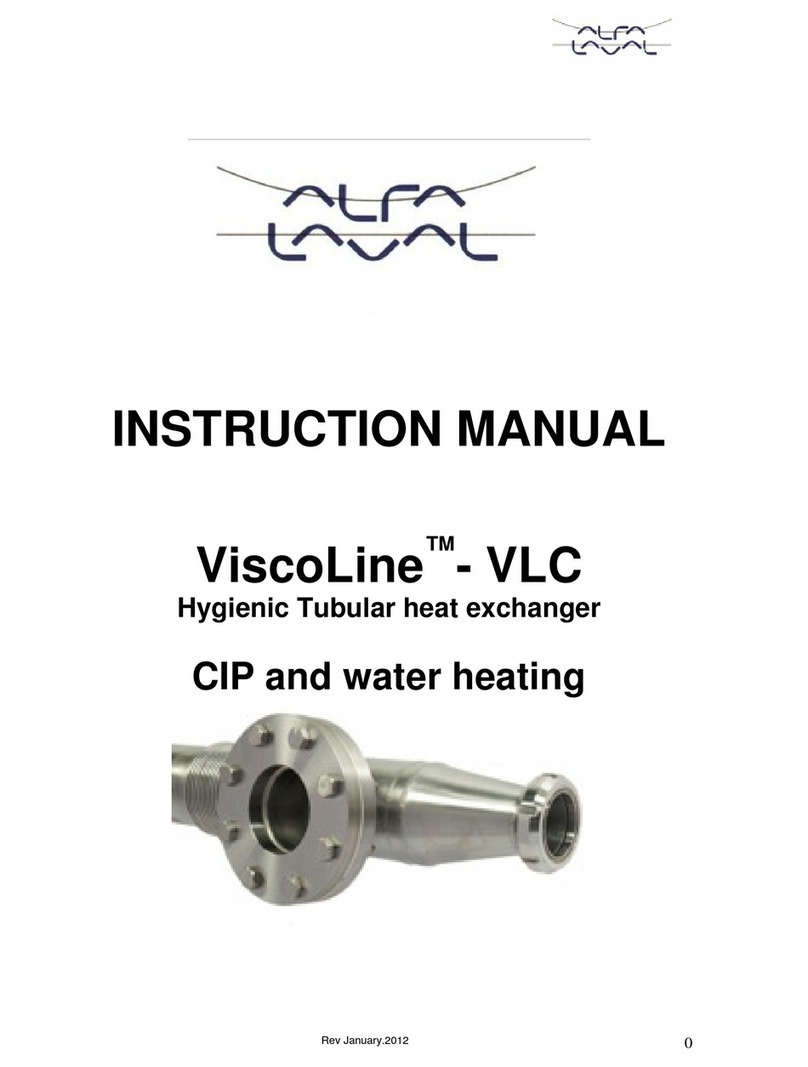
Alfa Laval Mini ECO
Installation, service and operating instruction
4
7.5 OTC heating curve ................................................................................................................................. 29
7.6 Parallel adjustment of heating curve...................................................................................................... 29
7.7 Operating mode Auto ............................................................................................................................. 30
7.7.1 The Built-in Heating Program............................................................................................................ 30
7.7.2 Reviewing the Heating Program ....................................................................................................... 30
7.7.3 Temperature Override....................................................................................................................... 30
7.7.4 Disabling/enabling time periods ........................................................................................................ 30
7.7.5 Modifying the heating program.......................................................................................................... 31
8Activation of installer parameters CM737.........................................................................32
8.1 Entering the installer set-up mode ......................................................................................................... 32
8.2 Category 1 parameters: Control panel settings...................................................................................... 33
8.3 Category 2 parameters: ECO-functions................................................................................................. 33
8.4 Category 3 parameters: Setting and displaying sensor values.............................................................. 34
8.5 Category 4 parameters: Heating actuator settings................................................................................. 34
8.6 Category 5: Fault History........................................................................................................................ 34
9Troubleshooting the control panel CM737........................................................................35
9.1 Fault codes on the control panel CM737 ............................................................................................... 36
10 Pump settings and pump performance.............................................................................37
10.1 Performance view................................................................................................................................... 37
10.1.1 Operation status................................................................................................................................ 37
10.1.2 Alarm status ...................................................................................................................................... 37
10.2 Setting view............................................................................................................................................ 38
10.3 Toggling the settings of UPM3............................................................................................................... 38
10.4 Key lock function .................................................................................................................................... 38
10.5 Pump curve proportional pressure mode 2, PP2................................................................................... 39
10.6 Fault finding pump.................................................................................................................................. 40
11 Electrical connections........................................................................................................41
12 Schematic diagram, main components.............................................................................42
12.1 Mini ECO F1........................................................................................................................................... 42
12.2 Mini ECO F2........................................................................................................................................... 42
12.3 Mini ECO F3........................................................................................................................................... 43
12.4 Mini ECO F4........................................................................................................................................... 43
12.5 Mini ECO F5........................................................................................................................................... 44
13 Service instructions............................................................................................................45
13.1 Tap water service instructions................................................................................................................ 45
13.1.1 Tap water temperature too low ......................................................................................................... 45
13.1.2 Tap water temperature too high........................................................................................................ 46
13.1.3 Hot water temperature unstable or too low....................................................................................... 46
13.2 Heating system service instructions....................................................................................................... 46
13.2.1 Heating system temperature too high or too low .............................................................................. 46
13.2.2 No heating......................................................................................................................................... 48
13.2.3 Heating temperature unstable........................................................................................................... 49
13.2.4 Disturbing noise from the circulation pump or the radiator system................................................... 50
13.2.5 Heating system often needs topping up............................................................................................ 50
14 Service actions for the installer.........................................................................................51
14.1 Check the function of the valve for hot water......................................................................................... 51
14.2 Check the function of the heating actuator and valve............................................................................ 52
14.3 Check the volume take-up and pressure equalizing of the expansion vessel ....................................... 52
15 Maintenance and repairs....................................................................................................53
15.1 Cleaning the heating media filter............................................................................................................ 53
15.2 Cleaning the heating circuit filter............................................................................................................ 53
15.3 Change pump components or the complete pump................................................................................ 54
15.4 Change the hot water actuator and heat exchanger.............................................................................. 55
15.5 Change the hot water valve.................................................................................................................... 55
15.6 Change the heating actuator.................................................................................................................. 56
15.7 Change the heating valve....................................................................................................................... 56
15.8 Change the heating circuit supply temperature sensor.......................................................................... 57
